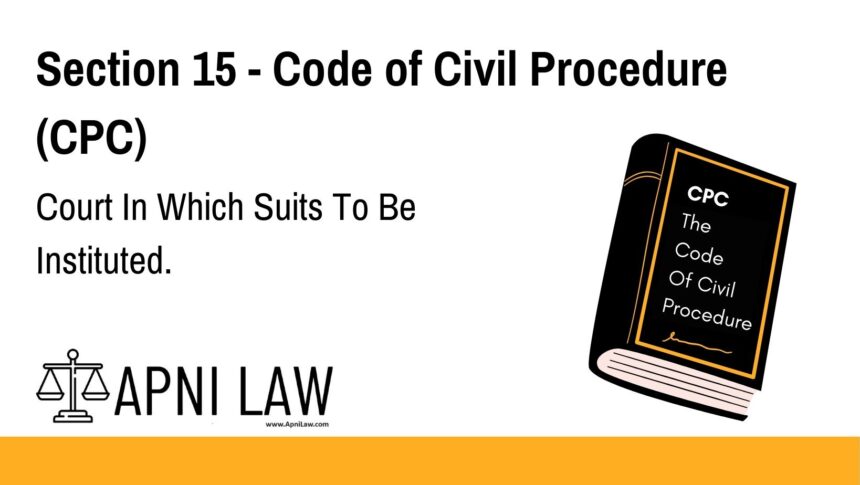Code
Every suit shall be instituted in the Court of the lowest grade competent to try it.
Explanation
Section 15 of the Code of Civil Procedure lays down a foundational rule regarding jurisdiction: a plaintiff must file a civil suit in the lowest court that has the authority to hear and decide the matter. The rationale is to avoid overburdening higher courts with cases that can be resolved at lower levels.
This provision does not take away the plaintiff’s right to sue, but it mandates that the appropriate forum be the lowest competent court based on pecuniary and territorial jurisdiction.
This principle reflects judicial discipline and administrative efficiency, ensuring cases move through the hierarchy only when necessary.
Illustration
Suppose X wants to file a civil suit against Y for recovery of ₹30,000. If the Civil Judge (Junior Division) in that district has pecuniary jurisdiction up to ₹1 lakh, then X must institute the suit in that court—not directly in a Senior Division or District Court.
If X files the same suit in a higher court when a lower court is competent to try it, the court may return the plaint to be filed in the appropriate court.
Common Questions & Answers
Q1: Can a plaintiff directly file the suit in a High Court if the value is low but the defendant is influential?
No. The law requires that the suit be filed in the lowest competent court. Influence or position of the defendant does not affect jurisdiction under Section 15.
Q2: What happens if the plaintiff files a suit in a court that is not of the lowest grade?
The court may return or reject the plaint and direct the plaintiff to present it before the competent lower court.
Q3: Does Section 15 override other provisions about jurisdiction?
No, Section 15 works in conjunction with other CPC provisions such as Sections 16 to 20 which deal with territorial and pecuniary jurisdiction. All must be considered together.
Q4: Who determines what the “lowest grade competent court” is?
This depends on the structure of courts in the concerned state, governed by state legislation and jurisdictional notifications issued from time to time.








